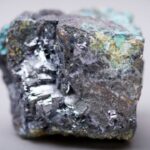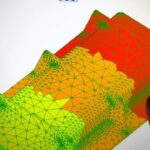Today’s modern world is all about data, and that’s the main reason why data visualization is so important these days. See, with data visualization, you can turn any data into an easy-to-understand graph, map, chart, or anything like that. That way, the data becomes much easier to read and understand, even for the people who aren’t experts in that. And within this data visualization area lies the Choropleth maps. But just like anything else in the modern world, there are certainly some limitations to such types of maps. And don’t get us wrong here, there are certainly some amazing perks of using such maps, but it is better to weigh the advantages and disadvantages of Choropleth maps before you utilize them for your projects. Well, that’s what we are going to do today, so yeah, let’s get down to it then. Shall we?
What Are Choropleth Maps?

Well, you’ve probably seen them before even if you didn’t know the name. These are special kinds of maps where different areas like countries, states, or even smaller places like districts are colored in unique ways. Why do we do this? Well, it helps us understand certain information better. For instance, let’s say you want to know which states in the U.S. have more people living in them. A choropleth map could color each state darker or lighter based on the number of people there. The darker the color, the more people live there. Pretty neat, right?
These maps aren’t just for counting people. They’re super useful in all sorts of areas. Are you into politics? Well. then you can use these maps to see how different areas voted. Curious about money and jobs? These maps can show you where people are earning more or less. Even scientists and researchers use them to make sense of complicated data. So next time you come across one of these colorful maps, you’ll know it’s not just for show. It’s a cool tool that helps us make sense of the world around us!
Advantages Of Choropleth Maps
First, let’s get started with the pros:
1. Visually Effective
First off, choropleth maps are really good at grabbing your attention. Imagine you’re scanning a bunch of numbers on a spreadsheet. Well, that sounds pretty boring, right? But with a choropleth map, you can immediately see what’s going on without getting lost in the numbers. It’s like having a snapshot that shows you the big picture. Whether you’re a decision-maker in a government office or just a student doing homework, this quick and easy way to understand stuff is super helpful.
2. Flexibility in Groupings
Another great thing is that you can play around with how you group your data on the map. Maybe you’re looking at income levels across different areas. You can set the map to show you who makes what, and where, and really customize it to what you’re curious about. This is awesome because, let’s face it, not all data is the same. Some info is like comparing apples to oranges, but with a choropleth map, you can make it all make sense!
3. Scalability
Here’s a fun feature, you can make a choropleth map for just about any size area you’re interested in. Want to look at something as small as a neighborhood or as big as the whole world? You got it! This means you’re not just stuck with one view; you can get the whole story from the local to the global level. It’s like having a magnifying glass and a telescope all in one tool.
4. Identification of Hot Spots
Last but not least, these maps are like treasure maps for finding “hot spots” or areas that stick out because something’s going on there. Let’s say you’re looking at a map that shows where crimes happen. With a quick glance, you can see which neighborhoods might need more police patrols. It’s like having a spotlight that shows you exactly where to focus your attention.
Disadvantages Of Choropleth Maps
Now’s the time to take a look at what challenges you might face with such maps:
1. Lack of Detail
So, you look at a choropleth map and think, “Wow, this whole area is super wealthy!” But hold on a second. That map is only giving you the big picture; it’s not zooming in to show you all the nooks and crannies. In reality, a region that looks wealthy could still have pockets where people are struggling to make ends meet. It’s a bit like saying everyone in a movie theater is laughing when some folks might be snoozing or checking their phones. So, yeah, these maps can sometimes give us a false sense of what’s going on.
2. Boundary Issues
Have you ever noticed how a choropleth map can make it seem like there’s a huge change as soon as you cross a border? One side is red, and the other is green, and you’re like, “Whoa, what happened?” But life isn’t like flipping a switch; things usually change gradually. Those sudden shifts at borders can make us think there’s a big, instant change when it might not be the case at all.
3. Size and Scale
This issue is also known as the “Alaska effect.” Because Alaska is huge on a map of the U.S., it can trick us into thinking it’s more important for whatever we’re looking at, like population or income, even if that’s not true. The same thing can happen with any large area on a choropleth map. It grabs our attention and can make us misunderstand what the data is really trying to tell us.
4. Interval/Class Sizes
Let’s say you’re trying to measure something but pick the wrong tool, like using a thermometer to measure distance. Silly, right? Well, choropleth maps can have a similar problem when it comes to picking the right “intervals” or “class sizes.” Basically, this means deciding how to group the data. If you get it wrong, you might end up with a map that either over-exaggerates differences or makes everywhere look kinda the same. And that can make it super hard to get the real message.
Conclusion
There you have it. Now you know what to expect when using Choropleth maps to visualize the data. Despite their negatives, we still believe that Choropleth maps can surely be beneficial in so many ways.

